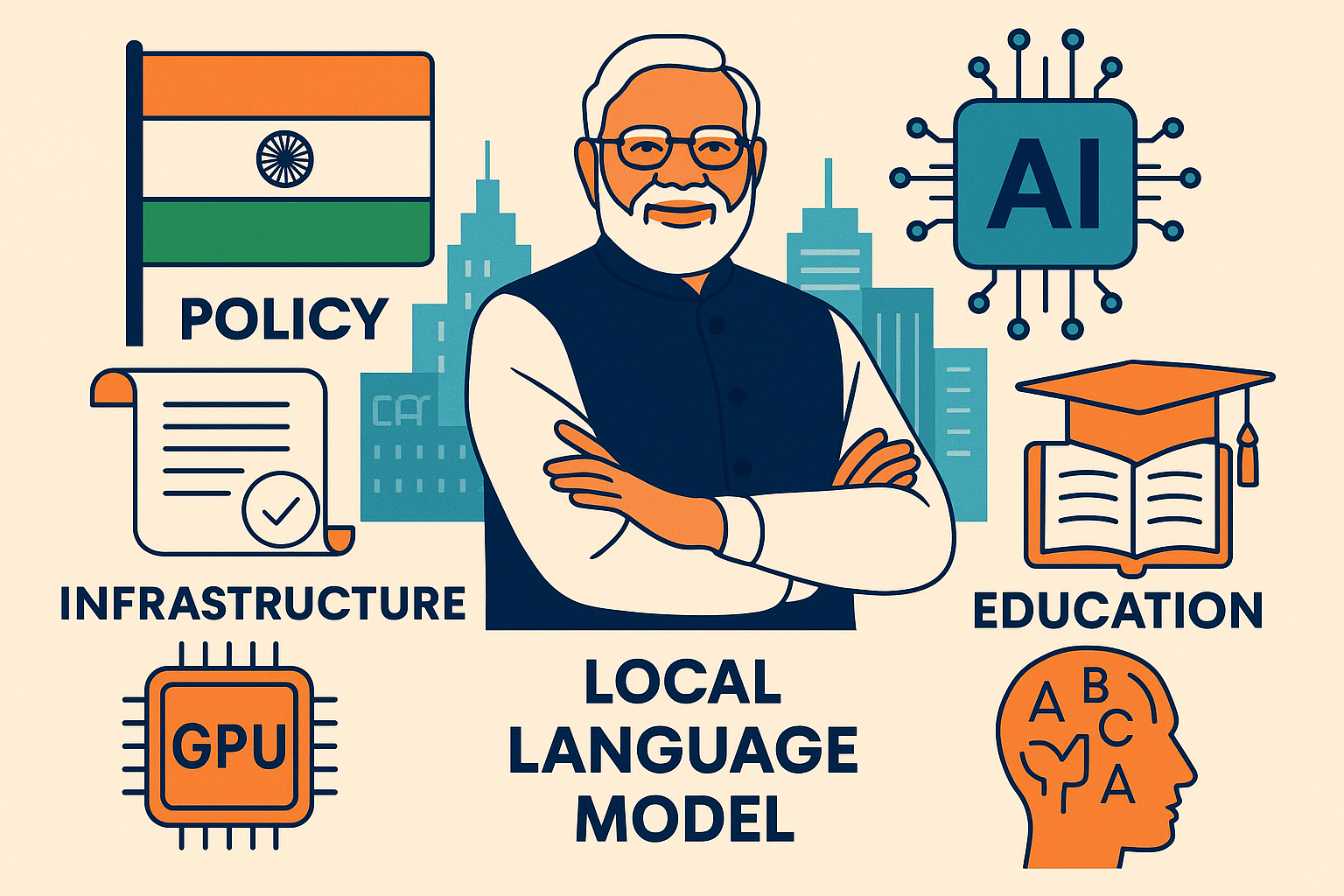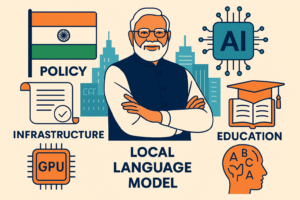Top AI Government Technologies in India 2025
From traffic lights that think for themselves to AI chatbots helping farmers, India’s government tech game is getting stronger every year. In 2025, we’ve seen some seriously cool government technologies that aren’t just high-tech—they’re super useful for regular people like you and me.
If you’re a parent trying to get a birth certificate without standing in line for hours, or a college student hoping for faster government results online, this article is for you. We’ll take you through India’s top government technologies as of June 2025—how they work, who they help, and why they matter.
Overview of Government Tech in India – What’s the Big Idea?
The Indian government has been working hard to make public services smarter, faster, and more accessible. That means fewer long queues, fewer trips to sarkari offices, and more work done with a few taps on your phone.
From rural villages in Bihar to big cities like Mumbai and Bengaluru, tech is changing the way the government connects with people.
1. DigiLocker 2.0 – No More Paper Trails
Remember when you needed to carry physical copies of your Aadhaar, PAN card, or school marksheets everywhere? Well, not anymore.
What is it?
DigiLocker 2.0 is a secure digital space where you can keep your government documents online.
Why It’s Cool:
- Class 10 results? Already uploaded.
- Driving license? On your phone.
- PAN card? Just a click away.
Real-life Example:
Riya, a college student in Pune, needed her birth certificate for an internship. She just opened the DigiLocker app, downloaded it, and emailed it. No photocopies, no stress.
2. AI Chatbots for Farmers – “Mitra” and Friends
In 2025, farmers across India are chatting with government-made AI bots in Hindi, Punjabi, Tamil—even Bhojpuri!
What is it?
AI-powered chatbots that help farmers with crop advice, weather updates, and government schemes.
Why It’s Cool:
- Works even with basic smartphones.
- Understands local dialects.
- Gives real-time suggestions based on weather and soil.
Real-life Example:
A sugarcane farmer in UP asked “Mitra” when to spray pesticides. The bot responded in Bhojpuri, with advice based on current weather in his area.
3. Bhuvan Portal by ISRO – Google Maps, Indian Style
While you use Google Maps to find a chaiwala nearby, the Indian government is using Bhuvan for land records, disaster alerts, and city planning.
What is it?
An Indian version of Google Earth built by ISRO, packed with satellite imagery and location-based tools.
Why It’s Cool:
- Helps states plan flood relief.
- Tracks illegal land encroachments.
- Supports smart city projects.
Real-life Example:
In Assam, flood authorities used Bhuvan’s satellite data to plan evacuation zones ahead of heavy rains.
4. e-Sanjeevani – Online Doctor Visits
Getting a doctor’s appointment used to mean traveling, waiting, and losing half a day. Not anymore.
What is it?
India’s official telemedicine platform where people can consult government doctors online.
Why It’s Cool:
- Free of cost.
- Used by over 14 crore Indians so far.
- Works in remote villages where doctors are hard to find.
Real-life Example:
A grandma in rural Jharkhand had a video call with a skin specialist in AIIMS Delhi—right from her village school’s digital center.
5. FASTag + AI Traffic Cameras = Smarter Highways
If you’ve been on a highway recently, you’ve probably seen how FASTag has changed toll booths. But now, it’s teamed up with AI-powered cameras to make highways even smarter.
What is it?
Automated systems that read FASTag, track vehicle movements, and help monitor speeding or accidents in real time.
Why It’s Cool:
- Less traffic at tolls.
- Instant accident alerts to authorities.
- Reduced over-speeding on expressways.
Real-life Example:
A speeding truck on the Delhi–Meerut Expressway triggered an alert through the AI camera, and traffic police responded in under 5 minutes.
6. UMANG App – Sarkari Services in One Tap
UMANG stands for “Unified Mobile App for New-Age Governance.” But don’t worry about the full form—it’s just the ultimate app for anything government-related.
What is it?
A one-stop app that offers 100+ government services—from pension info to gas bookings.
Why It’s Cool:
- You can pay your electricity bill and check your PF balance in the same app.
- Available in 13 languages.
- Even works in offline mode for some services.
Real-life Example:
Sunil, a retired railway employee in Chennai, checks his monthly pension and files grievances—all using UMANG.
7. ONDC – Amazon-Style Shopping, Made in India
Heard of Amazon and Flipkart? ONDC is a government-backed digital platform where small Indian shopkeepers can sell their products online—without paying hefty commissions.
What is it?
The Open Network for Digital Commerce (ONDC) is like a marketplace for all kinds of goods, but made fair for local sellers.
Why It’s Cool:
- Local kirana stores can sell online.
- No monopoly by big tech companies.
- Works in small towns too.
- Real-life Example:
A sweet shop owner in Indore listed his rasgullas on ONDC and now gets orders from nearby cities.
8. ABHA – Your Digital Health ID
Just like Aadhaar gives you a unique ID, ABHA gives you a health ID. It keeps all your medical records in one place.
What is it?
A personal digital health account where your test results, prescriptions, and doctor visits are saved.
Why It’s Cool:
- Doctors can see your past records instantly.
- No need to carry physical files.
- Emergency info can be accessed quickly.
Real-life Example:
When a man in Jaipur met with a minor accident, hospital staff pulled up his allergy info using his ABHA number. That small detail helped avoid a serious reaction.
9. Face Recognition in Airports and Railway Stations
In major cities like Bengaluru and Hyderabad, you can now board flights using just your face. Sounds like a sci-fi movie, right?
What is it?
Facial recognition tech to check ID, boarding, and security without showing paper documents.
Why It’s Cool:
- Speeds up check-ins.
- Reduces the need for ID cards.
- Safer and faster during emergencies.
Real-life Example:
Rajesh boarded a flight at Kempegowda Airport just by walking through the DigiYatra gates. No boarding pass, no ID scanning.
10. MyGov and MeriPehchaan – People Talking to the Government
These platforms allow citizens to give feedback, report issues, or join government campaigns.
What is it?
Digital platforms where citizens and the government talk directly—no middleman needed.
Why It’s Cool:
- You can take part in policy-making polls.
- Report potholes, broken streetlights, or missing water supply.
- Sign in using a single login across government websites.
Real-life Example:
Priya, a teacher in Rajasthan, suggested a school safety idea on MyGov. A few weeks later, her idea was featured in the state education newsletter!
Innovations Worth Mentioning
Here are a few other cool tech updates that deserve a shoutout:
- CoWIN 2.0: Now used for all public vaccination programs, not just COVID.
- AgriStack: Uses AI to analyze farmland data and improve crop planning.
- AI Court Translations: Some courts now have real-time translation tools for smoother hearings.
Frequently Asked Questions
1. Are these government apps free?
Yes, all the apps and platforms mentioned above are free to use.
2. Do I need a smartphone to access these services?
Most services work on smartphones, but many are also accessible through Common Service Centres (CSCs) in rural areas.
3. Is my data safe on these apps?
Yes, the government uses strong security measures like OTPs, biometrics, and encrypted storage.
4. Can I use these services in local languages?
Most major apps like UMANG, DigiLocker, and e-Sanjeevani support multiple Indian languages.
5. Do I need to be tech-savvy to use these?
Not at all. These apps are made simple. Even first-time smartphone users can get help from local cyber cafes or CSCs.
Conclusion
In 2025, India isn’t just adopting technology—it’s building it to solve real, local problems. Whether it’s helping a farmer in Odisha or a student in Mumbai, these government technologies are changing how we live, work, and interact with public services.
The future is not just digital—it’s Desi Digital.
So the next time someone tells you government services are slow, show them DigiLocker, or book a free doctor consultation on e-Sanjeevani. Things are changing, and they’re changing fast.
Got a favorite government app or service?
Share it with your friends—or better yet, teach your grandparents how to use it. Because when tech reaches everyone, that’s real progress.














Post Comment